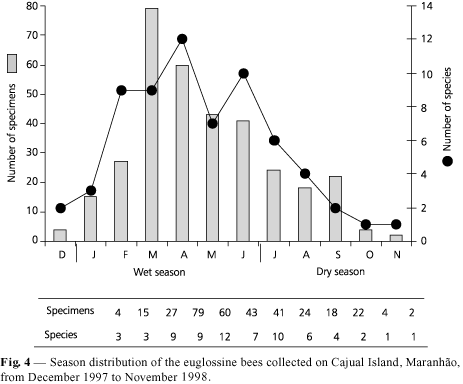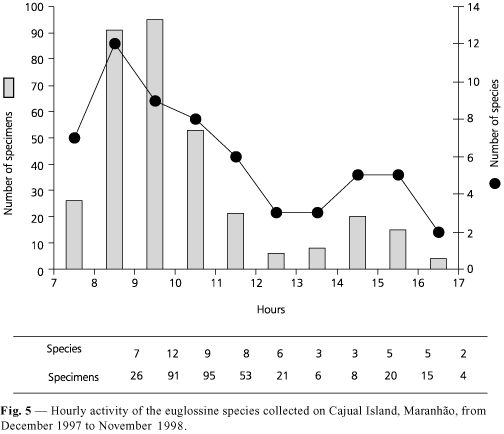A study was conducted in an early second-growth forest aiming at knowing the richness, relative abundance, seasonal distribution, and hourly frequency of euglossine bees, and their association with scent baits. Male bees were attracted to cineole, vanillin, methyl salicylate, and eugenol. The baits were hooked 1.5 m high and 6 m from one another. The specimens were collected from December 1997 to November 1998, once a month, from 7:00 to 17:00 h. A total of 339 male euglossine bees were caughts, accounting for 19 species and four genera. The most common species was E. cordata, making up 69.9% of the individuals, followed by E. truncata (2.3%), E. violaceifrons, and E. smaragdina (2.1%). The most attractive scent was cineole, which baited 87% of the specimens and 73.7% of the species. Vanillin, the second most visited bait, eured 7.6% of the specimens and 26.3% of the species. E. surinamensis was only collected with this bait. Methyl salicylate and eugenol baited combined 2.6% of the specimens. However, by species numbers Methyl salicylate attracted 21% whereas eugenol was attractive for 15.8% of them. In general, the species were more abundantly found in the rainy season (January-June). The hourly activity data showed that the euglossine bees were attracted to the baits all day long, but at a higher frequency in the morning period, peaking between 8:00 and 10:00 h.
Euglossinae; Cajual Island; scent baits; Maranhão







